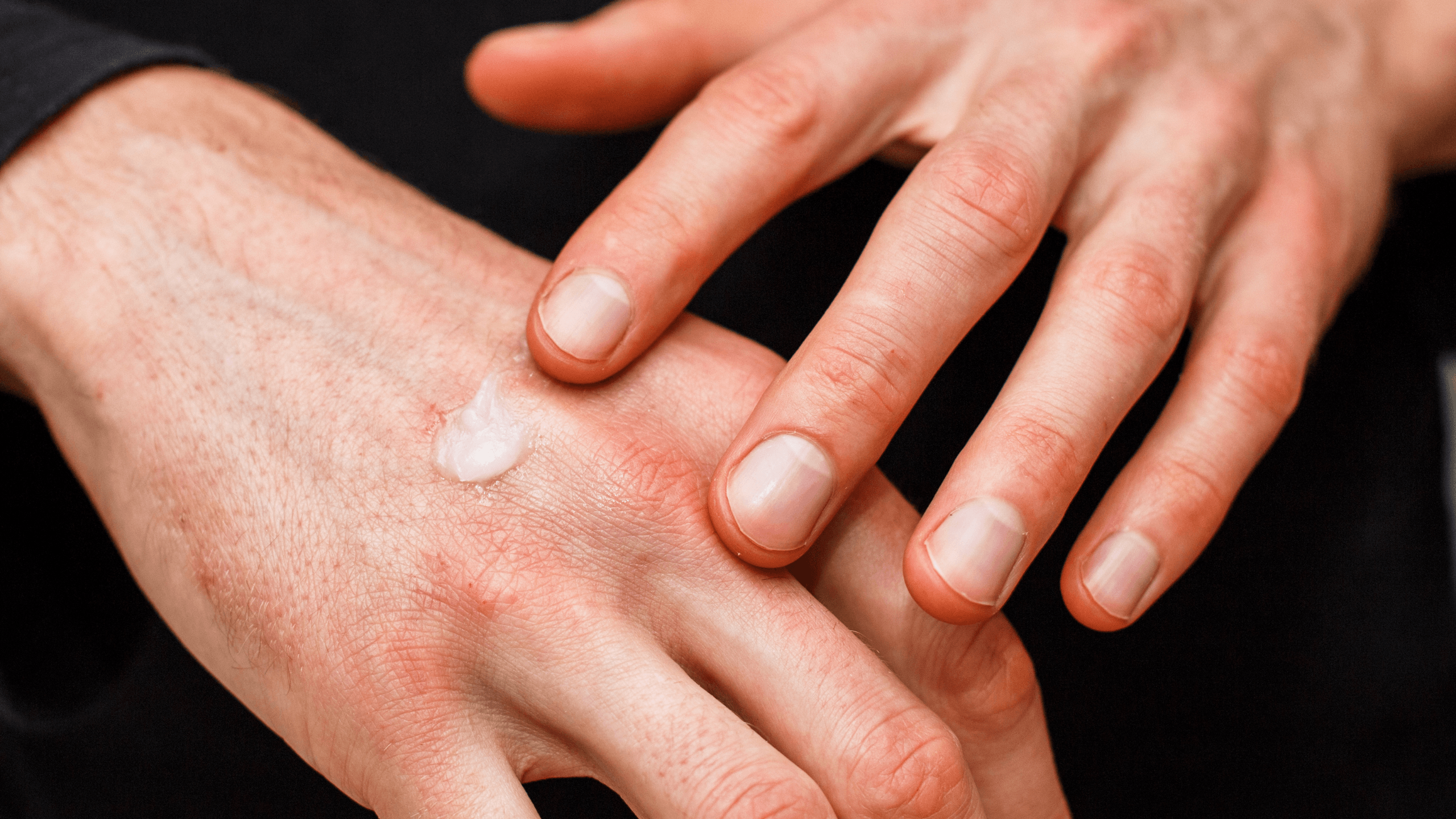Inflammation plays a central role in eczema. When your immune system senses a threat, it triggers inflammation to fight off perceived environmental invaders. When this defense response continues long-term, it can produce chronic inflammation. The result: itchy, red, sensitive skin that can feel hot and painful. These symptoms are commonly treated with topical steroids.
What Is a Topical Steroid?
A topical steroid is a form of steroid applied directly to the skin to help reduce inflammation. A doctor may prescribe topical steroids, also known as topical corticosteroids, in various forms. They’re available as:
- Creams
- Ointments
- Gels
- Lotions
- Bandages
- Solutions
What Inflammatory Skin Conditions Are Topical Steroids Used To Treat?
Topical steroids are used most commonly to help treat eczema, an inflammatory skin condition that causes dry, flaky, and itchy red patches of skin. Many doctors recommend corticosteroids for several forms of eczema, including atopic dermatitis, nummular eczema, seborrheic dermatitis, and contact dermatitis.
Steroids are also used to help treat psoriasis, an autoimmune skin condition that causes scaly, raised patches of skin.
How Do Topical Steroids Work?
Topical steroids can address inflammation and irritation of the skin in several different ways. Corticosteroids can have anti-inflammatory, immunosuppressive, vasoconstrictive, and anti-proliferative effects on various skin cells.
That means these topical steroids have the power to alter how the immune system cells function, hinder chemical processes that result in inflammation, and constrict blood vessels to reduce the appearance of eczema.
What Are the Potencies of Topical Steroids?
Topical steroids come in four different potencies, including mild, moderate, potent, and very potent.
Mild
Mild topical steroids can often be purchased over-the-counter. This group of corticosteroids includes your standard hydrocortisone cream.
Moderate
Moderate steroid creams are considered two to 25 times more potent than hydrocortisone. Examples of moderate topical steroids include clobetasone butyrate and triamcinolone acetonide.
Potent
Potent steroids are 100 to 150 times stronger than hydrocortisone. Examples include betamethasone valerate, betamethasone dipropionate, and diflucortolone valerate.
Very Potent
Very potent corticosteroids include clobetasol propionate and betamethasone dipropionate. This classification includes topical steroids up to 600 times as potent as hydrocortisone.
How Are Topical Steroids Formulated?
Each type of topical steroid has its own unique formulation. For example, corticosteroid ointments tend to have higher absorption rates and provide more lubrication and occlusion Steroid creams are generally less potent than ointments, because they contain water suspended in oil.
Lotions and gels provide the least occlusion. When medications such as topical steroids are occluded, they form a protective layer on the skin and prevent water from evaporating. This process intensifies the steroid’s effects.
What Are the Side Effects of Topical Steroids?
Topical steroids come with a long list of common and less common side effects. Common side effects of topical corticosteroids include itching, burning, stinging, redness, dryness, thinning of the skin, stretch marks, bruising easily, enlarged blood vessels (spider veins), and more.
Less common side effects include rosacea, changes in skin color, Cushing’s syndrome, delayed wound healing, and suppression of the adrenal glands.
Some of the most noteworthy side effects include:
Burning or Stinging
The most common side effect of topical steroids is a burning/stinging sensation when applied to the skin. As your skin adjusts to the treatment, the burning and stinging tend to lessen and go away on their own.
Worsening Skin Symptoms
Sometimes using topical steroids can cause skin inflammation, irritation, or infection to worsen.
Topical Steroid Withdrawal
Topical steroid withdrawal, also called Red Skin Syndrome, is a syndrome that can occur from prolonged steroid use. Topical steroid withdrawal (TSW) occurs most frequently in patients who have used high-potency steroids frequently over a long period of time. Topical steroid withdrawal is most known for causing red, blistering, and flaking skin; however, TSW can also cause:
- Oozing from raw skin
- Swelling
- Swollen lymph nodes
- Nerve pain
- Red and irritated eyes
- Hair loss
- Insomnia and fatigue
- Heightened sensitivity to heat and cold
- Weight loss or weight gain
- Depression
- Anxiety
There has been little clinical research into TSW to date and it does not have formal diagnostic criteria. It is unknown how many people have TSW and or how many topical steroid users are likely to develop it. Many healthcare providers have not heard of TSW. Others are just beginning to recognize it.
Should I Use Topical Steroids to Treat Skin Inflammation?
Whether or not you should use topical steroids to treat skin inflammation is a highly personal decision. To help you better understand the best treatment option for your skin condition, visit your primary healthcare provider or a board-certified dermatologist.
Sometimes topical steroids are needed for a short period of time to find relief from irritated and inflamed skin. Before you choose to use any type of treatment, though, always educate yourself on the benefits as well as the possible side effects.
If you choose to use topical steroids to combat skin inflammation, follow the directions from your healthcare provider and avoid using more than they recommend.
Steroids aren’t the only option for treating eczema. Check out the steroid-free and microbiome-balancing Gladskin Eczema Cream to relieve redness, itch, and irritation.
